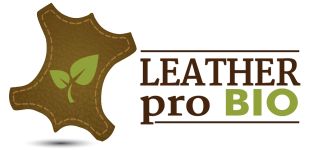New valorisation pathway for chromium-tanned, leather residues by a combination of protein extraction, chrome recovery and biogas production
Background
The global volume of waste from the leather industry amounted to more than 800 million t per year, of which about 200 million t was generated in Europe. Approximately 210 million square meters of leather are produced per year in the European Union. About 3.5 million t of various chemical reagents and 8.4 million m3 of water are used for the production of such skins.
These figures only include waste whose chemical composition is comparable to that of finished leather. Most of these residues, as well as used leather and leather-based consumer products, are disposed of with conventional residual waste and, depending on the country, either landfilled or incinerated. The chromium and heavy metal components contained are returned to the environment either directly or via the ashes, while new chromium has to be provided for the tanning of new leathers.
Goal and Work Packages
Within the project, the goal is the development of new pathways for the recycling of chromium tanned leather residues, to re-use the contained chromium for the tanning of new leather, to minimize the release of chromium into the environment and to use the biotechnological potential of the contained biomass to safe energy costs. The primary objective is the removal of chromium from tanned leather residues and subsequent combined material and energy utilization of the remaining organic content.
In order to achieve this goal, the chromium must be extracted from the leather waste and the organic material contained in the waste has to be made available to the microorganisms. This can be realized by a special physicochemical treatment process, the thermal pressure hydrolysis (TPH). After the process, the treated material can be divided into two fractions: Liquid phase and solid phase. By adapting and optimizing of the treatment conditions, the chromium content can be selectively enriched in one fraction. Chromium dissolved in the liquid phase can be made available for tanning by special processes, developed by the ITEE. The recycled chromium will be tested by the ITEE and the OIBS by performing extensive tanning tests on various leather materials to define weather the chromium can be reused. The leathers from that tanning-tests are subjected to all necessary material testing to demonstrate their recyclability and to specify the content of recycled chromium in future tanning processes. The chromium-free organic residues will be tested for their biogas potential and as additives for biotechnological applications. Based on the results from the tests energy balances for different scenarios can be established. It will be shown how much of the required energy can be recovered via biogas production from the remaining organic residues. The results are incorporated into the economic and ecological considerations.
Economic and ecological potential
The economic potential of the project is based on combined energy and material recovery of by-products and production waste from leather production. Currently, the solid waste is collected from the tanneries by specialized disposal companies and usually incinerated or landfilled. The costs for this disposal increase from year to year and have doubled in recent years alone to around € 150 per ton. The technologies developed within the framework of the project can significantly reduce the disposal costs for the tanneries. By using the solid waste for biogas production, energy costs can be significantly reduced and recovery of the chromium content from the production residues reduces the procurement costs for tanning chemicals.
Consortium
Research will be performed by the PFI (Prüf – und Forschungsinstitut Pirmasens.V.) and the ITEE (Sieć Badawcza Łukasiewicz Instytut Technologii Eksploatacji). PFI and the countrywide Polish chamber of leather industry (OIBS), representing a large number of SME’s in their respective countries and domains. An international users committee, representing all relevant industries (tanneries, biogas production, biotechnology, process engineering, etc.), will be established to monitor the industrial relevance of the project. OIBS will represent the leather industry and will provide extensive sample material. The SME´s will be informed on a regular basis on the progress of this precompetitive research and will have the opportunity to guide the research according to their needs.
The research project CORNET 246 EN of the research association Prüf-und Forschungsinstitut Pirmasens e.V. -PFI-, Marie-Curie-Straße 19, 66953 Pirmasens was funded by the following ministries within the programme of “promoting pre-competitive joint research” and carried out under the umbrella of the German Federation of Industrial Co-operative Research Associations (AiF). We would like to express our sincere thanks for this support.
Period of funding: 01.01.2020-31.12.2021
